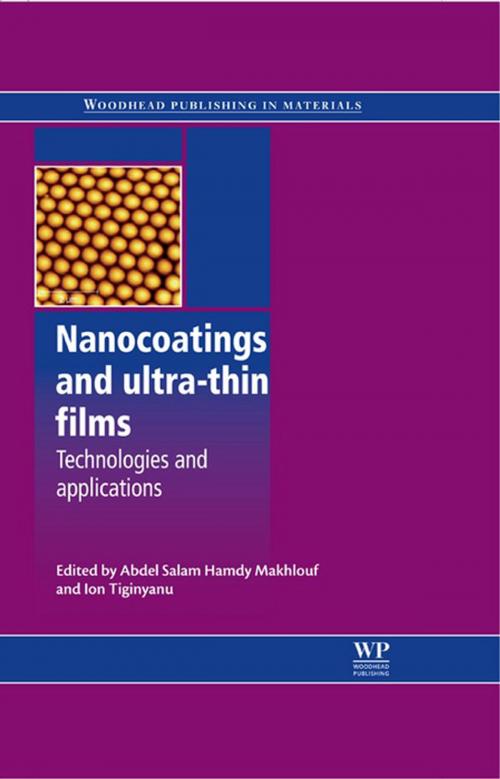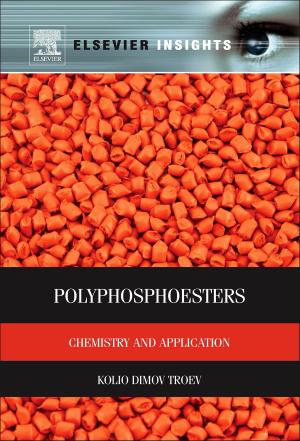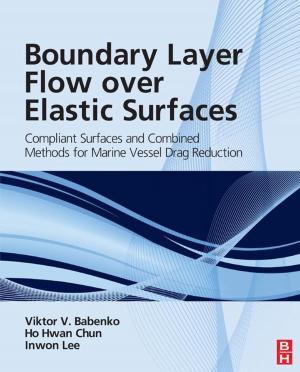Nanocoatings and Ultra-Thin Films
Technologies and Applications
Nonfiction, Science & Nature, Science, Chemistry, Technical & Industrial, Technology, Material Science| Author: | ISBN: | 9780857094902 | |
| Publisher: | Elsevier Science | Publication: | September 14, 2011 |
| Imprint: | Woodhead Publishing | Language: | English |
| Author: | |
| ISBN: | 9780857094902 |
| Publisher: | Elsevier Science |
| Publication: | September 14, 2011 |
| Imprint: | Woodhead Publishing |
| Language: | English |
Coatings are used for a wide range of applications, from anti-fogging coatings for glass through to corrosion control in the aerospace and automotive industries. Nanocoatings and ultra-thin films provides an up-to-date review of the fundamentals, processes of deposition, characterisation and applications of nanocoatings.
Part one covers technologies used in the creation and analysis of thin films, including chapters on current and advanced coating technologies in industry, nanostructured thin films from amphiphilic molecules, chemical and physical vapour deposition methods and methods for analysing nanocoatings and ultra-thin films. Part two focuses on the applications of nanocoatings and ultra-thin films, with chapters covering topics such as nanocoatings for architectural glass, packaging applications, conventional and smart nanocoatings for corrosion protection in aerospace engineering and ultra-thin membranes for sensor applications.
With its distinguished editors and international team of contributors, Nanocoatings and ultra-thin films is an essential reference for professional engineers in the glazing, consctruction, electronics and transport industries, as well as all those with an academic research interest in the field.
- Provides an up-to-date review of the fundamentals, processes of deposition, characterisation and applications of nanocoatings
- Focuses on the applications of nanocoatings and ultra-thin films, covering topics such as nanocoatings for architectural glass, packaging applications and ultra-thin membranes for sensor applications
- Includes chapters on current and advanced coating technologies in industry, nanostructured thin films from amphiphilic molecules, chemical and physical vapour deposition methods and methods for analysing nanocoatings and ultra-thin films
Coatings are used for a wide range of applications, from anti-fogging coatings for glass through to corrosion control in the aerospace and automotive industries. Nanocoatings and ultra-thin films provides an up-to-date review of the fundamentals, processes of deposition, characterisation and applications of nanocoatings.
Part one covers technologies used in the creation and analysis of thin films, including chapters on current and advanced coating technologies in industry, nanostructured thin films from amphiphilic molecules, chemical and physical vapour deposition methods and methods for analysing nanocoatings and ultra-thin films. Part two focuses on the applications of nanocoatings and ultra-thin films, with chapters covering topics such as nanocoatings for architectural glass, packaging applications, conventional and smart nanocoatings for corrosion protection in aerospace engineering and ultra-thin membranes for sensor applications.
With its distinguished editors and international team of contributors, Nanocoatings and ultra-thin films is an essential reference for professional engineers in the glazing, consctruction, electronics and transport industries, as well as all those with an academic research interest in the field.
- Provides an up-to-date review of the fundamentals, processes of deposition, characterisation and applications of nanocoatings
- Focuses on the applications of nanocoatings and ultra-thin films, covering topics such as nanocoatings for architectural glass, packaging applications and ultra-thin membranes for sensor applications
- Includes chapters on current and advanced coating technologies in industry, nanostructured thin films from amphiphilic molecules, chemical and physical vapour deposition methods and methods for analysing nanocoatings and ultra-thin films















